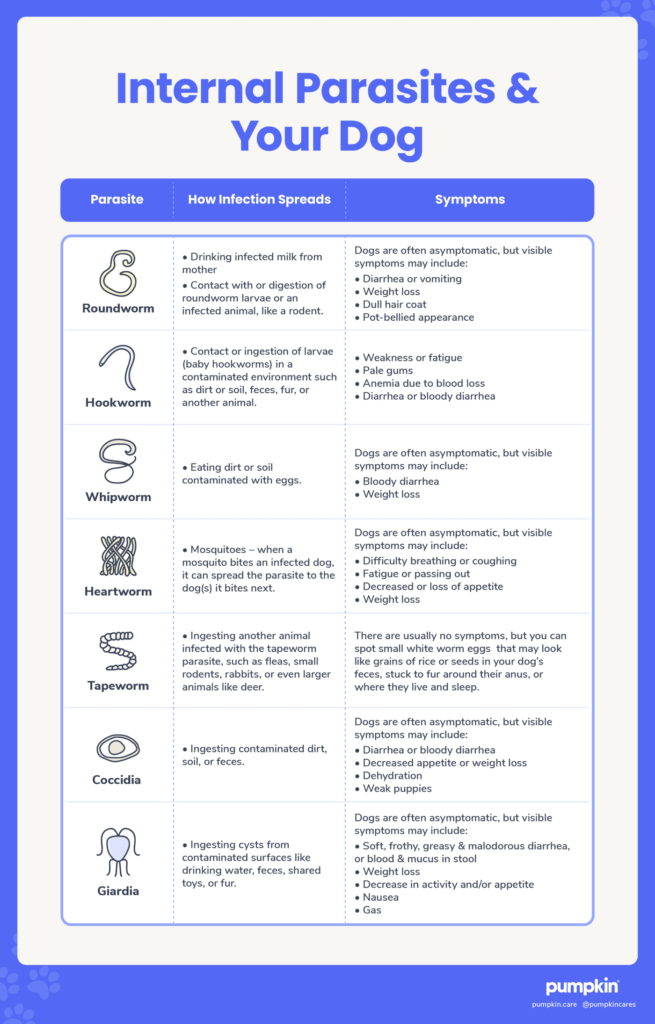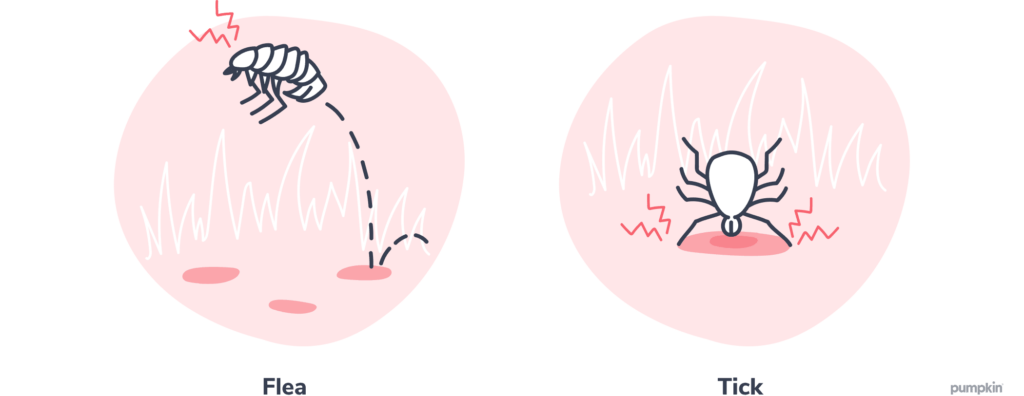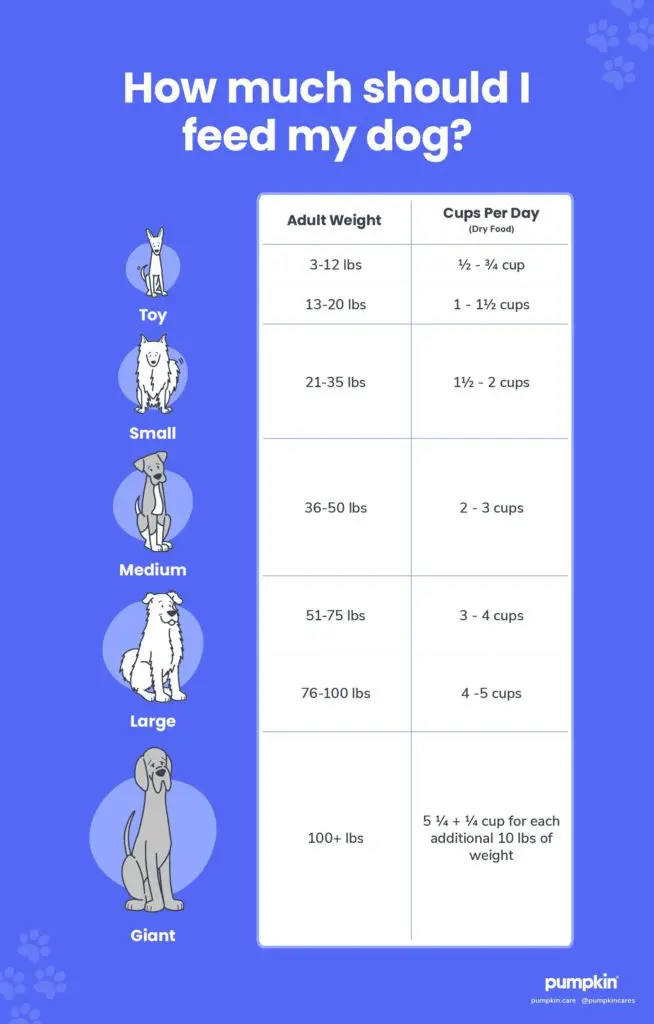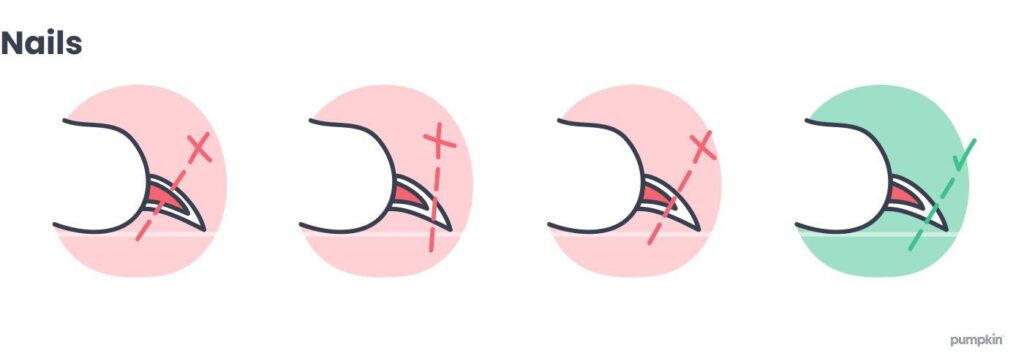The key to a healthy life for your pup goes way beyond an annual vet visit. A combination of routine preventive care, an understanding of your dog’s breed and behavior, and consistent veterinary appointments can help you give your dog the best care over their lifetime.
But where to start? Even the most dedicated dog parents can struggle when navigating the peaks and valleys of dog health care – that’s why we’re here to provide a comprehensive guide. We know that maintaining your dog’s health and happiness is your top priority, so let us lend a helping paw!

Dog genetic health
You might be wondering, “What does my dog’s breed and genetics have to do with their health?” The short answer is – a lot! From purebreds to mixed-breeds, knowing your fur kid’s genetic makeup can help you better understand their behavior, predispositions to certain health conditions, and exercise needs. Not only can this help you make smarter preventive care decisions, but also detect problems early on, thus improving your dog’s overall health outcomes.
Of course, getting this information is easier for some dog parents than others. If your puppy came from a breeder, they should be able to provide you with information about your dog’s breed, ancestry, and any health conditions they’re predisposed to. If your pup came from a shelter or rescue however, their exact breed is likely a mystery! Luckily, there are amazing dog DNA test kits out there that can reveal your pup’s breed composition.
Having this vital information can help you prepare for your dog’s future health needs. For example, hip dysplasia is just one genetic disease that certain large breeds like Labradors, Golden Retrievers, and Great Danes are more prone to. If you know your pooch is susceptible to a certain condition, you can work with your vet to keep an eye out for symptoms and catch it early on. If you’re still in the consideration phase and haven’t gotten a dog yet, it pays to do some research on different breeds to see which one would be the best fit for you.
It’s a great idea to prepare ahead of time for unexpected accidents and illnesses that may pop up in your dog’s life. A Pumpkin Dog Insurance plan can cover eligible hereditary and breed-specific accidents and illnesses, so you have help saying ‘yes’ to the best care for your pup, even if it’s costly.
Understanding your dog’s genetic health can help better inform preventive care. Preventive care refers to health care your dog receives to help prevent illness and disease. The old saying goes that prevention is better than cure – and many vets would agree that our dogs are no exception! There are many measures you can take to help reduce your pup’s chances of developing health issues, but let’s dig into the big ones.

Regular vet visits
Going to the vet is a vital part of any dog’s life. From puppyhood to their golden years, your dog’s health needs will change over time, so finding a veterinarian you can trust is key.
But, how often should you take your dog to the vet? This will vary depending on your dog’s age.
As a puppy…

- They’ll visit the vet for their initial puppy check-up
- They’ll return to the vet every 3-4 weeks to complete the vet’s recommended vaccine schedule
- If they are being spayed or neutered, that procedure will be scheduled between the ages of six and 24 months old, depending on your vet’s recommendation.
- If accidents and illnesses happen (which we hope they don’t!), your puppy may need additional vet visits or emergency clinic visits.
As an adult dog…

- Adult dogs between one to seven years old typically need annual check-ups to make sure they are in good health and that there are no underlying issues
- If an accident or illness occurs, your dog may need additional vet visits or emergency clinic visits
As a senior dog…

- As dogs age and are more susceptible to illness, they often benefit from twice-annual vet visits to get ahead of any health concerns
- Senior dogs who do have health issues may need increasingly frequent visits to the vet, and how often they will need to visit the vet will be unique to their specific needs
If you’re a new dog parent heading into your first vet visit, be sure to read this useful vet visit preparation guide!

Key dog vaccines
If you’ve welcomed a new puppy into your life, chances are you’ve already looked into a recommended puppy vaccine schedule. But did you know that vaccines are just as important for adult dogs? If you’ve adopted an adult dog and they’re not up-to-date on their vaccines, consult your vet on how to get them protected.
Vaccines are vital in helping protect your dog from harmful infection and disease, and can often be life-saving. Vaccines work to help your dog’s immune system fight disease-causing organisms by injecting antigens that look like a particular disease, but won’t make your dog sick. In response, your dog’s immune system creates antibodies to combat the disease. Then, if your dog ever does come into contact with the real disease-causing organisms in the future, their immune system knows how to fight it.
Your vet is the first place to go for vaccine advice and to create a vaccine schedule for your dog. There are several core vaccines vets recommend for all dogs such as:
- Canine distemper virus
- Adenovirus-2
- Parvovirus
- Parainfluenza virus
Plus there are many non-core vaccines that your vet may recommend for your dog, based on their lifestyle and disease risk, including:
- Bordetella bronchiseptica
- Leptospira
- Borrelia burgdorferi (the bacteria that causes Lyme disease)
- Canine influenza virus (H3N8 and H3N2)
Taking advantage of vaccines isn’t just great for your dog’s long-term health – it can help save you a lot of stress down the line! Imagine your dog did develop a serious disease that could have been easily prevented; Not only would your dog have a long road to recovery, but their treatment could be very costly.
At Pumpkin, we’re just as committed to helping prevent illnesses and disease as we are to helping treat them. With our wellness package, Pumpkin Preventive Essentials, dog parents can receive a 100% refund for three core services dogs need to stay healthy each year, including: your dog’s annual wellness exam fee; 2 key vaccines; a fecal “poop” test for intestinal worms; and a blood test for heartworm disease and diseases spread by ticks.
Preventive Essentials isn’t insurance, but an optional benefit dog parents can add to a Pumpkin plan.

Parasite preventatives
Pesky parasite infections are no fun for your pup, or for you! While parasites are a common dog health problem, the great news is that many are preventable or can be easily detected and treated. Here are the types of parasites your pooch may come into contact with over the course of their life:
Internal parasites
Internal parasites include intestinal worms (like roundworms, hookworms, or whipworms), heartworms, and microscopic single-celled parasites like coccidia and Giardia. You can read our full guide on worms for more in-depth info on how internal parasites make their way into your dog. For a quick overview, see below!

What should you do if you suspect your dog is infected with an internal parasite?
As you can see, the symptoms are very similar for many of these parasite infections, with many of them showing no visible symptoms in your dog at all. If you suspect something is up, always consult your vet as soon as possible. If your dog is showing more extreme symptoms, you may have to take them to an emergency clinic for immediate treatment.
External parasites
The infamous fleas and ticks are tiny insect parasites that survive by sucking the blood of their host (meaning, your pooch!). If left untreated, one flea or tick could rapidly reproduce resulting in an infestation that takes a toll on your dog’s health. This handy diagram can help you tell the difference between fleas and ticks:

Fleas are tiny, six-legged pests that are harder to spot, that almost always leave a trail of dark brown grit aka flea dirt behind. Ticks are a bit larger, have eight legs, and have a bulbous shape.
Remember, fleas and ticks are mini but mighty. They can cause health complications ranging from mild irritation to infecting your dog with serious blood-borne illnesses that can be contagious to humans as well.
Dog parasite prevention and testing
If internal or external parasites are present, a vet will easily be able to diagnose your dog either through a blood test, a fecal test, or a physical exam for parasites that can be spotted by the naked eye like fleas and ticks.
You will likely be the first one to spot fleas and ticks on your dog. Usually, fleas can be treated with a medicated bath, effective prescription medications, or OTC treatments. Seek your vet’s advice for the most effective, long-lasting flea and tick prevention to use. If it’s a tick you’ve spotted, here is a step-by-step guide to safely removing a tick from your dog.
Regardless of whether you suspect your dog is infected, you should make a habit of getting your dog a yearly blood test for heartworm & tick diseases and a yearly fecal test for intestinal worms. Testing and diagnosing parasites early is crucial in helping fight these annoying invaders.
To reduce the likelihood of a parasite infection, there are several important preventive measures you can take:
- Consult your veterinarian about the best parasite preventative medication for your dog, and make sure your dog takes that medication regularly
- Keep your home and yard clean and feces-free at all times
- Keep your dog from drinking standing water, eating feces, or eating potentially infected animals like rats
Pumpkin Preventive Essentials helps you stay on top of parasite prevention by giving dog parents a 100% refund for one fecal “poop” test each year to test for intestinal worms, plus one blood test for heartworm disease and diseases spread by ticks. While not insurance, Preventive Essentials is an optional wellness package dog parents can add to a Pumpkin plan.

Dog nutrition
There are plentiful benefits to feeding your dog a balanced diet with high-quality ingredients. Just like humans, dogs need a balance of vitamins, minerals, protein, fat, and carbohydrates for their bodies to function properly. A great diet positively affects their whole body from their skin and coat, to their muscles, to their digestive system.
It pays to do your own thorough research on what food works best for your dog, however, we compiled an extensive list of the best dog foods out there. To give you a mini version, here are some of our favorites for adult dogs.
- Best for Adult Dogs (Overall): Purina Pro Plan Adult Complete Essentials Dry Dog Food
- Best Dry: Life’s Abundance All Stage Dry Food
- Best Wet: Purina Pro Plan Adult Complete Essentials Wet Dog Food
It’s also crucial to keep your dog at a healthy weight. This can help lower your dog’s risk of diabetes, high blood pressure, respiratory disease, kidney disease, joint disease, and some forms of cancer. Overfeeding your pup with treats and larger-than-needed meals can quickly lead to obesity and a host of health problems that come with it.
Here’s a sample feeding chart according to adult dog size and weight:

Note: Dog feeding amounts will vary by type of food, caloric content, and whether or not your dog is a healthy weight. Check the feeding chart on the back of your dog’s food packaging and when in doubt, consult your veterinarian. If you have a puppy that’s less than 6 months old, this guide will be more useful.
Your dog’s nutritional needs will vary greatly depending on their size, breed, and lifestyle. At the risk of sounding like a broken record, your vet is your number one resource for questions about your dog’s diet, including the best foods to feed and how much to feed your dog daily to prevent obesity.
Did you know that your vet may prescribe food or supplements to treat certain conditions? And pawesome news, Pumpkin plans cover prescription food and supplements for covered accidents and illnesses! (Prescription food & supplements are not covered when they are used for weight management or general health maintenance).
Dog food allergies
Notice that something is not right with your pup? If you observe symptoms like excessive itching, diarrhea, and skin rashes, it may be that your dog has a food allergy. Food allergies in dogs are fairly common, and the following ingredients are just some everyday allergens:
- Beef
- Chicken
- Chicken egg
- Cow milk
- Wheat
- Soy
- Corn
It’s tricky to diagnose a dog food allergy by yourself as the symptoms are similar to other health issues, like skin conditions. If you suspect a food allergy may be the cause of your dog’s symptoms, you can work with your vet to determine exactly what’s causing it. A common method is a vet-supervised food elimination trial to figure out the allergen that’s causing all the problems.

Dog exercise and training
Just like a balanced diet, plentiful exercise plus a good dog training routine are central pillars of a healthy lifestyle for your dog. All dogs need mental and physical stimulation, though it rings true that “different breeds have different needs”. A hunting dog like a Beagle, for example, will need more exercise than a small, docile breed like a Pomeranian or Shih Tzu.
Likewise, some breeds are extremely clever and need mental challenges to keep them from turning to other (sometimes destructive) means of entertaining themselves.
How much exercise does a dog need?
Every breed is different in their exercise needs, but as a general rule of thumb, dog breeds in the herding, working, terrier, and scent hound breed groups require a minimum of 60 minutes of exercise a day. Breeds that have a flatter face and are prone to breathing issues (called Brachycephalic breeds) like bulldogs, as well as small and toy breeds need less exercise but still at least 30 minutes per day.

You should ask your veterinarian’s advice on the appropriate amount of exercise for your dog, especially for small breeds! There is a perception that small breeds need less exercise, but this sometimes makes it easy for dogs to become overweight or obese which comes with its own slew of health issues.
What are some fun ways to exercise with your dog?
- Walks and hiking
- Tugging games
- Hide and seek
- Fetch
- Bike rides
- Disc throwing
- Training and trick-learning sessions
- Swimming

Dog hygiene, grooming, and teeth cleaning
Taking care of your dog’s skin, fur, teeth, and their overall hygiene is another big component of preventive care. And the great news is that most of your dog’s essential grooming can be done at home, with a little help from a professional every few months (or more regularly if you have a dog with specific grooming needs).

Giving your dog a bath every so often (whether they love it or not!) helps get rid of excess hair, dust, dirt, poop, and other nasties your dog may have picked up while out and about. Keeping your dog clean is crucial for helping prevent parasites and keeping ears clean can help prevent infection. A regular bathing schedule is also helpful to reduce dander for dog parents with mild allergies.
As for how often to bathe your dog, this will depend on their breed, hair type, and lifestyle. For example, if your pup likes to roll in the mud at the park, you will have more frequent bathing in your schedule! For help keeping your dog’s fur squeaky clean, here’s our list of the best dog shampoos to try.
Fur care
Left to run wild, your dog’s fur can develop knots and mats, which can cause skin irritation and provide a cozy place for fleas and ticks to take up residence. According to the ASPCA, severe hair mats can even “grow so tightly that they can restrict or cut off blood circulation, which can eventually require amputation.” Ruh roh! Thankfully, regularly trimming and brushing your dog’s hair can help keep your dog’s coat in pristine shape.
Sometimes it’s hard as a dog parent to care for your pup’s fur at home, especially if maintenance requires special tools. This is where a professional groomer can be a big help. A groomer is trained to give your dog the proper care their fur and skin needs, and they have the tools and equipment to do a more thorough job than anyone can at home.

Nail care
Your groomer may even have specialized equipment like a grooming hammock to make nail clipping easier. Nail clipping is important to keep up with, as overgrown nails can be painful for your dog and cause problems when they walk.
We have a great guide on how to cut your dog’s nails, but here are the basics:
- Check nails regularly – when they are touching the ground, it’s time to trim!
- Choose the right size nail clipper for your dog.
- Get to know your dog’s nail – see if you can spot the quick, which is the pink part inside clear nails and white inside black nails, and contains a blood vessel and a nerve. That’s the part you want to avoid when trimming because if you cut it, it hurts and bleeds.
- Have Qwikstop or corn starch nearby. In the event you do make the nail bleed, applying either of these substances will stop the bleeding.
- Do everything you can to keep your dog calm and comfortable while you’re trimming, such as giving verbal praise and treats. You can also distract your dog with a lick mat covered in something safe and delicious.

Dental cleanings for dogs
Many folks make the mistake of neglecting their dog’s chompers in their grooming routine, but the truth is our dogs need regular teeth brushing just like us! Dental cleanings reduce the likelihood of plaque and tartar building up on the teeth. In severe cases, that build-up can cause:
- Bleeding, inflamed gums (gingivitis)
- Periodontal (gum) disease
- Painful infections and/or abscesses
- Bad breath
- Tooth loss
- Bone loss
A whopping 80% of dogs suffer from some form of gum disease by age three, so it’s a real problem your dog may face without help keeping their teeth clean.
What is the best way to take care of my dog’s teeth?
To help keep your dog’s dental health in tip-top shape, you can:
- Maintain a regular at-home brushing routine
- Feed your dog a balanced, healthy diet
- Invest in some dental-friendly toys and treats
- Have your dog’s teeth checked yearly by a veterinarian, and follow their recommendations for dental care.
If your pup ever has to deal with dental disease, it feels great to know you have help getting your dog the treatment they may need. Coverage for dental illnesses is crucial, as dental disease is common and treatment can be very costly. Pumpkin Dog Insurance plans cover dental and periodontal illnesses.

Final thoughts
Though they can’t tell you themselves, your pup appreciates all the care and effort you’re putting into keeping them happy and healthy. We can feel the love! Keep up the good work on your dog’s health – you’re pawesome!
Our final note is to say that you know your dog better than anyone else. If you observe a change in their behavior or see concerning symptoms suddenly pop up, never hesitate to contact your veterinarian for support or advice.




